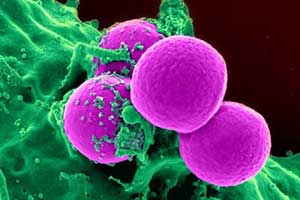Modern Advancements in Production Materials
As time passes and technology advances, so do the materials that are used to produce the new technologies. It is an exciting time to be alive, as many creative and amazing ideas are in the works.
Here are five materials that are being developed that could end up changing the world.
Elastocaloric Materials

New elastocaloric material is being developed at the University of Maryland. The material is made up of nickel and titanium alloys and could end up revolutionizing the manufacturing world.
Typically cooling technology for HVAC and refrigeration systems use vapor compression cooling. The cooling uses harmful chemical refrigerants such as Freon.
The new elastocaloric cooling technology, where stress is applied to materials to release and absorb heat, is environmentally safe and doesn’t degrade over a million cycles. The material, while also being durable and efficient, is also scalable to larger machines.
This means that HVAC and refrigeration could potentially end up lasting longer and being less expensive for everyone over the next couple years. The multibillion dollar market could end up changing for the better with this new material.
Shrilk

Shrilk is a biodegradable plastic-like material. It’s made up of chitosan, which is common in shrimp cells and a silk protein called fibroin. The material is as strong as aluminum and also 50% lighter. Shrilk will be a very important material for medical implants and tissues. Because of its non-toxic materials and durability, it will help many people in the medical industry.
Cellulose Nanofiber

The Royal Institute of Technology in Sweden has invented a biodegradable material using cellulose nanofibers from wood. It is considered the strongest bio material, and is stronger than steel on a per weight basis and eight times stiffer than spider’s silk. It could end up being a green alternative to plastics.
It will also be cost effective to produce since the materials used to make it are widely available.
Self-healing Gel

MIT chemical engineers have developed a material that is capable of repairing and strengthening itself using carbon in the air. This revolutionary material might end up being used for construction projects and change the way buildings are made.
The fact that it can use carbon to sustain itself will give it a wide range of applications and could help provide more affordable housing for everyone.
Spider Silk

Spider silk is one of the strongest materials on the planet. The silk is actually 5 times stronger than steel. This is because each strand of silk, although thinner than a human hair, has thousands of nanostrands giving it near unparalleled strength.
Scientists have come up with a way to produce artificial spider silk. The material is great for textile, aerospace and can actually be used in the medical artificial ligaments, surgical sutures, and cell scaffolds for tissue repair.
Interestingly enough, scientists are able to synthesize spider silk using the milk of transgenic goats.
Manufacturing Right NOW, While Thinking of the Possibilities…
These are five materials that could change manufacturing, production and the world around you as we know it. There are so many industries and products that these materials can revolutionize. While we wait for these materials to go through further development to become more commonplace, you can still count on Global Trade Specialists to help with your manufacturing needs in the meantime.
If you have a new or existing product you’re looking to get mass produced, contact us. We have been helping manufacturer and source our customers products for over 30 years.
